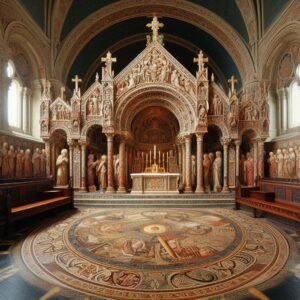The ard, also known as a scratch plough, represents one of the earliest forms of agricultural technology used by the people of ancient Brigantia.
Period: Saxon
Jul 07
Early Christian syncretism and how the old ones hid amongst the new religion
Syncretism is where two or more differing beliefs become merged. In England, this first happened under Roman rule, where many pre-existing Celtic shrines to specific deities were associated with Roman deities of the same qualities or attributes. Based on extensive research, I am now confident that in Britain, the early Christians undertook a similar process and with that knowledge, we should be able to reverse engineer, to some extent, our local Brigantian Celtic pantheons.
Jun 20
James the Deacon of York
The Gregorian mission, characterized by its strategic and persistent efforts, was bolstered in 601AD with the arrival of Paulinus, one of the monks sent by Pope Gregory to support Augustine’s endeavours. Among those accompanying Paulinus was James the Deacon, a figure shrouded in mystery due to the scant historical records of his life.
Jun 19
Guide – Agricultural practices through time
Prehistoric Yorkshire is a landscape rich with history, revealed through various archaeological finds that offer a glimpse into the ancient past. The oldest evidence of human activity in this region dates back to around 125,000 years ago, but it is the later periods, particularly the Iron Age, that have yielded significant discoveries related to ploughing and farming.
- 1
- 2











